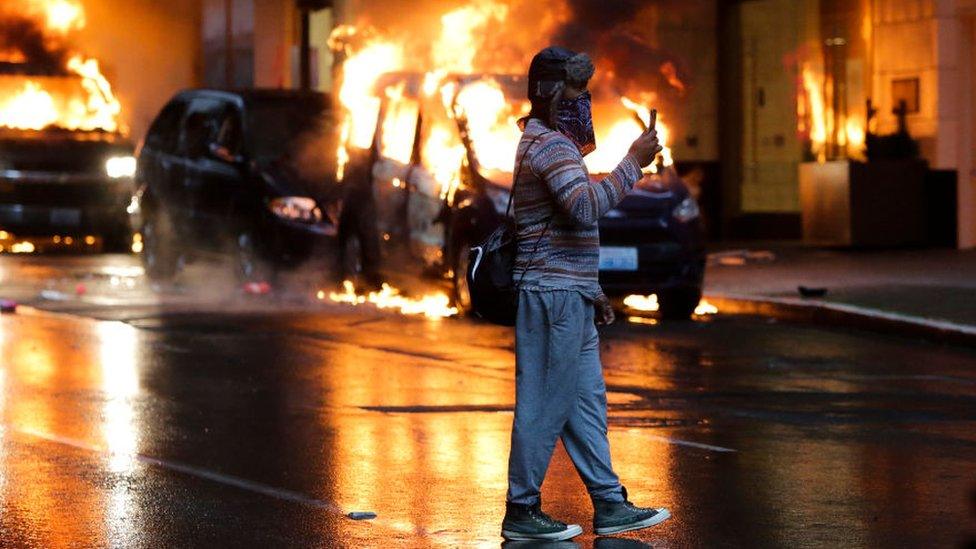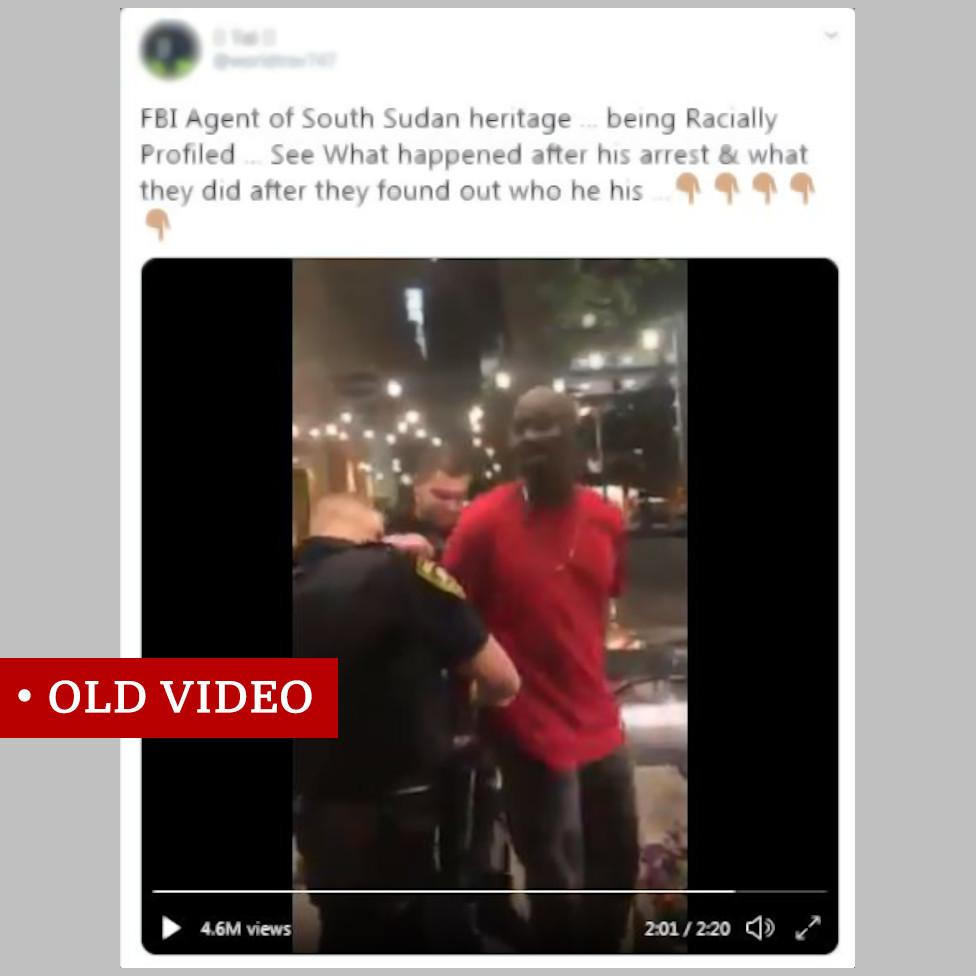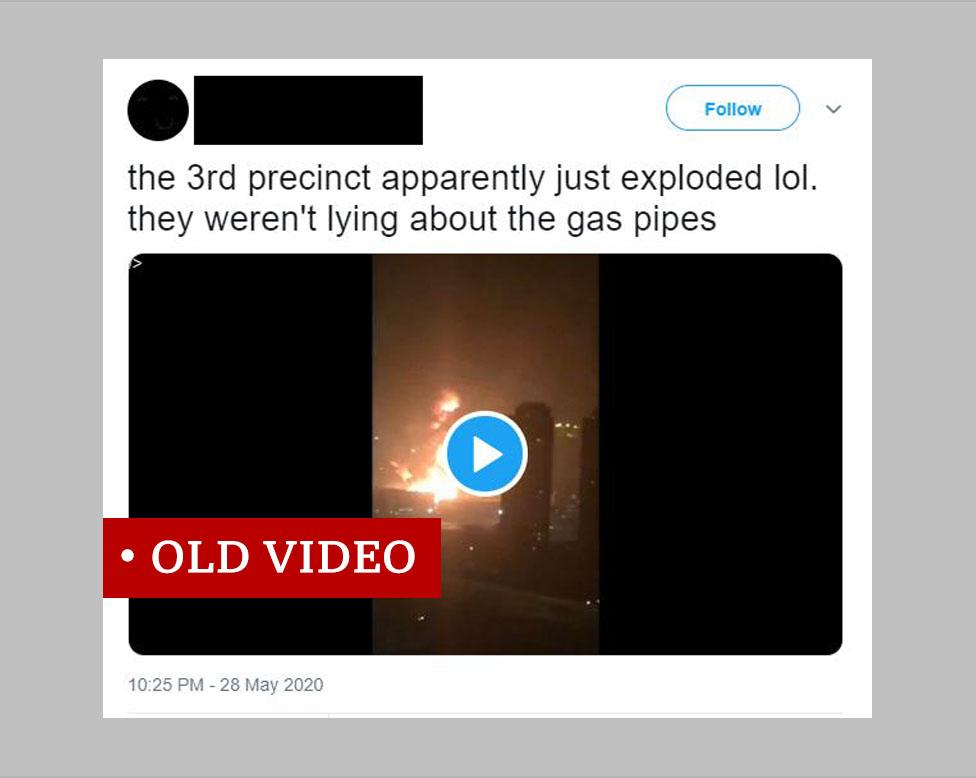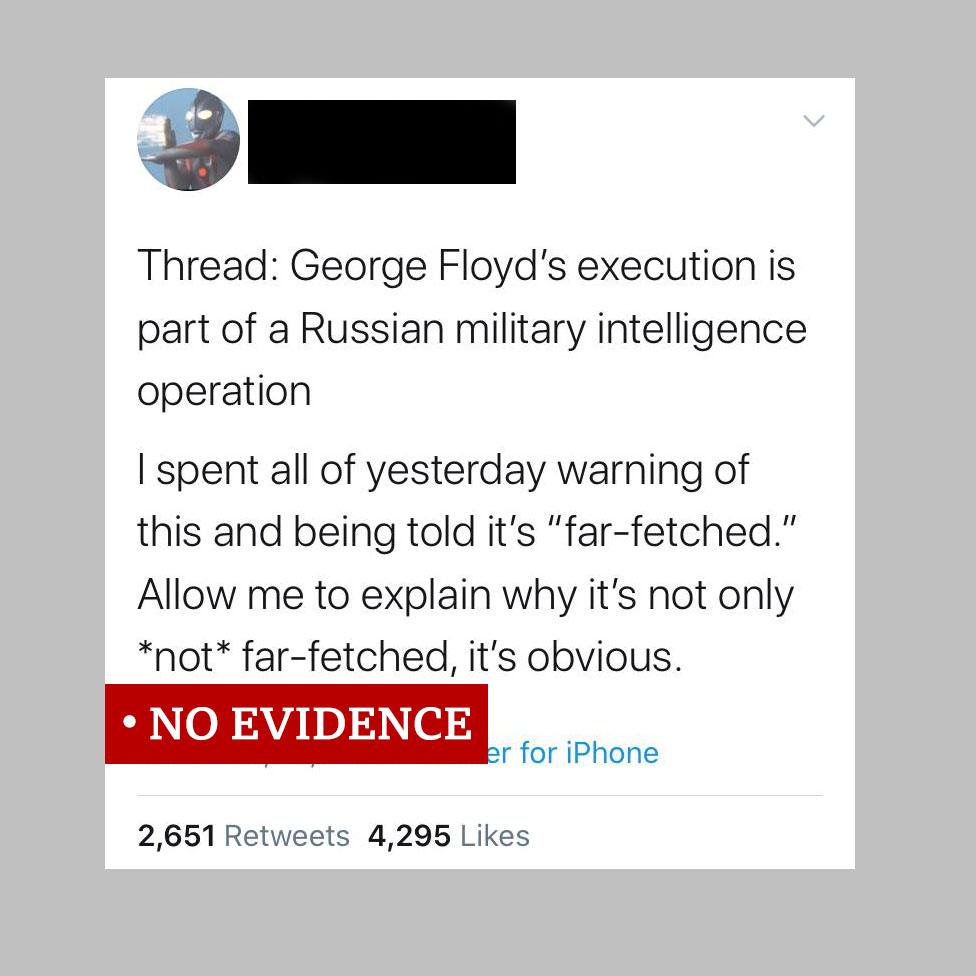George Floyd protests: Misleading footage and conspiracy theories spread online
- Published

Protests sparked by the death in police custody of African-American George Floyd in Minneapolis have spread across the US and to other countries. They've been documented in videos, images and posts on social media.
But some of these aren't what they claim to be. The BBC's anti-disinformation team has been tracking misleading videos and conspiracy theories about the protests, which have been circulating online.
So, here's what to look out for - and avoid - on your social media feeds.
'Brick' videos investigated
Rumours that the protests have been set up with potential projectiles handed out to agitators have gained traction, with thousands of posts referencing "bricks" on social media.
Several videos that show piles of bricks along with claims that they were planted by police or the government have been watched by millions of people.

Other posts pin the blame on Antifa - the left-wing group President Trump has accused of promoting the disturbances.
However, there's no evidence so far to suggest foul play, nor that the protests have been somehow pre-planned.
Most of the videos and images we've seen don't look particularly suspicious - it's not uncommon to see piles of bricks near building sites.
Responding to a video suggesting bricks had been deliberately placed to escalate protests, San Francisco police said on Twitter, external "pallets are affiliated with a construction site and (we) have contacted the contractor to have them removed."
One police department in Boston hit back at misleading claims about a viral video of its officers unloading bricks from a van.
Suggestions had been made on social media that the officers were unloading bricks from a vehicle "to use them as an excuse" against protesters.
However, Boston's Northeastern University Police Department has tweeted that the officers had collected them "from a damaged brick sidewalk, external" and taken them back to the station as they were posing a safety hazard to pedestrians.
Another viral video from Fayetteville, North Carolina that has racked up over a million views shows a pile of bricks in the vicinity of protests as a man says there is "no construction" site in the area.
We've been able to geolocate the video and found images from 24 May with the same pile of bricks in the same place, long before any protests took place.

In other cases, old images of piles of bricks have been re-shared of previous demonstrations elsewhere, such as from the protests in Hong Kong last year.
Old Videos
We've seen lots of examples of old video surfacing in recent days.
Among many genuine videos of brutal arrests, one that went viral yesterday was not what it seemed. The dramatic video shows a man being arrested then released by police once they'd checked his ID.

A post claiming the man in the video is an "FBI agent" has been viewed over 4 million times on Twitter. This claim was repeated on Facebook and Instagram by others sharing the video, where it racked up millions more views.
In response, Rochester Minnesota Police Department put out a statement, external clarifying that the man is not a Federal Bureau of Investigations (FBI) agent. The incident took place in June last year, when he was mistaken for a wanted man.
The original post of the video on Instagram includes a caption which stated the video was from the year before, and contains no mention of the FBI.
April arrest video
A video of a teenager being violently arrested by a US police officer has generated almost 10 million views in the last few days.

But the incident happened back in April - in Rancho Cordova, a city in Northern California. This wasn't made clear in the latest post that has been retweeted more than 100,000 times. It also wrongly identifies the teenager as female.
The clip attracted widespread criticism at the time.
Meanwhile, there is footage from the current protests which has led to allegations of police brutality.
Video from the US shows police using batons and tear gas on protesters and journalists seemingly unprovoked.
Wrong year, wrong country
This video claims to show a US police building on fire and was posted on 28 May.

It's not only old - it's from 2015 - it was filmed in another country. It shows an explosion in the Chinese city of Tianjin.
So, why are people sharing old videos?
"The videos may be compounding the anger they are feeling and could be driven by attempts to sow division or get clicks," says Marianna Spring, BBC Specialist Disinformation and Social Media reporter.
Conspiracy theories
Speculation about who's behind the protests have been circulating online.
Some claims are unsubstantiated, others totally false.
First up, posts that have gone viral about George Soros.
Some influential right-wing figures have made unfounded claims that the Hungarian-American billionaire is "funding" the demonstrations.
Supporters of QAnon - a conspiracy theory about a "deep state" secret coup against Donald Trump - have shared similar claims.
More than a million posts and memes online have repeated allegations about Mr Soros paying agitators.

Mr Soros, whose Open Society Foundations provide financial support to a number of civil society groups and progressive projects around the world, has been a bogeyman of some on the right for a long time.
His organisation has responded to the latest posts, tweeting that "Mr. Soros and the Open Society Foundations oppose all violence and do not pay people to protest".
Rumours about foreign countries
Claims have circulated online about Russia's involvement in the protests.
Viral tweets with thousands of shares suggest that Russia was involved in George Floyd's death - as part of a military operation or an elaborate plot. There is no evidence to support these claims.

This isn't to rule out the idea that Russia or other countries - either through state media outlets or networks of fake accounts - could be involved in stoking tensions online.
Investigations into Russian interference during the 2016 US Presidential election revealed that Russia was involved in a misinformation campaign, infiltrating groups and pages run by US activists - and that included Black Lives Matter groups.
Reporting by Flora Carmichael, Alistair Coleman, Joice Etutu, Jack Goodman, Shayan Sardarizadeh, Marianna Spring, Olga Robinson and Ben Strick.


